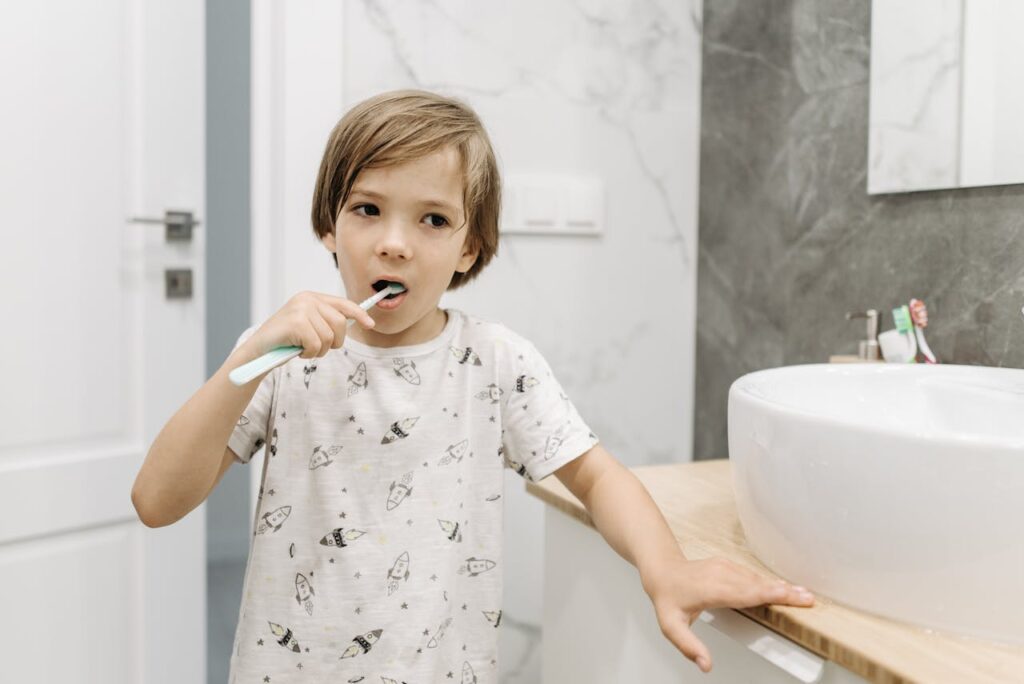As a parent, you know that your child’s needs change at every stage of their development, and their oral hygiene is no exception. A toothbrush that’s perfect for a toddler won’t be right for a school-aged child. Choosing the correct size and type of toothbrush and toothpaste is a crucial step in setting your little one up for a lifetime of healthy smiles. Here’s a simple guide to help you pick the best products for your child’s age.
Infants and Teething Babies (0-12 months)
Even before your baby’s first tooth erupts, you can start laying the foundation for good oral hygiene. The goal at this stage is to keep their gums clean and get them used to the feeling of having their mouth cleaned.
- Toothbrush: You don’t need a traditional toothbrush yet. A soft, damp washcloth wrapped around your finger works perfectly for gently wiping their gums after feedings. Once the first tooth appears, a finger toothbrush is a great way to transition them.
- Toothpaste: You should not use toothpaste at this stage unless specifically advised by your pediatric dentist. The focus is on removing milk and formula residue from the gums and first tooth.
Choosing Toothbrushes for Children: Toddlers (1-3 years)
Your toddler is starting to become more independent, and their mouth is growing! Now is the time to introduce them to a real toothbrush and a tiny amount of toothpaste.
- Toothbrush: Look for a brush with a small head and soft bristles that’s designed for a child’s mouth. The handle should be large and easy for you to grip, as you’ll be doing all the brushing at this stage.
- Toothpaste: It’s time to introduce fluoride toothpaste. The American Dental Association (ADA) recommends using only a smear of toothpaste, about the size of a grain of rice, for toddlers. This is a very important step in protecting their tiny teeth from cavities.
Choosing Toothbrushes for Children: Preschoolers (3-6 years)
At this age, brushing becomes a fun adventure! Your child will want to do it themselves, but parental supervision is still essential.
- Toothbrush: You can upgrade to a brush with a slightly larger head and a handle that’s colorful or features their favorite cartoon character to make brushing exciting. Look for a toothbrush that fits comfortably in their mouth.
- Toothpaste: Now you can increase the amount of toothpaste to a pea-sized amount. This is a critical transition. You should teach them how to spit the toothpaste out into the sink after brushing to avoid swallowing too much fluoride. Continue to supervise them to make sure they’re using the right amount and not eating the toothpaste!
School-Aged Children (7-12 years)
By now, your child has the dexterity to brush on their own, but they still need guidance to ensure a thorough cleaning.
- Toothbrush: At this age, your child can transition to a toothbrush that is a bit larger, with a size similar to an adult’s but made for their mouth. An electric toothbrush can be a great option. Many models have built-in timers and can improve a child’s brushing technique and cleaning effectiveness.
- Toothpaste: Continue to use a pea-sized amount of fluoride toothpaste. You can begin to let them choose their own toothpaste to encourage them to take ownership of their oral health.
Why Fluoride is So Important
Fluoride is a naturally occurring mineral that plays a vital role in preventing tooth decay. It strengthens tooth enamel, making it more resistant to the acid attacks that cause cavities. For children, a small amount of fluoride is a key part of maintaining a healthy smile.
The most important thing to remember is consistency. Making brushing a fun, twice-daily routine is the best way to instill good habits. If you have any questions about choosing the right products for your child or their oral health needs, don’t hesitate to contact us at Tiny Teeth Big Smiles! We’re here to help.






